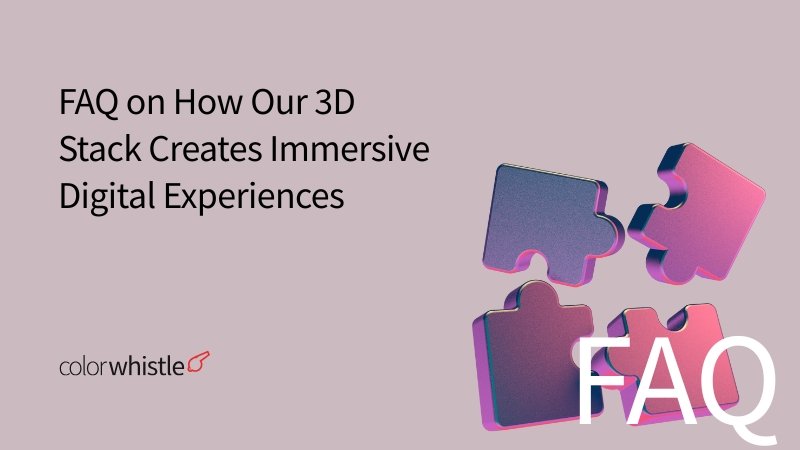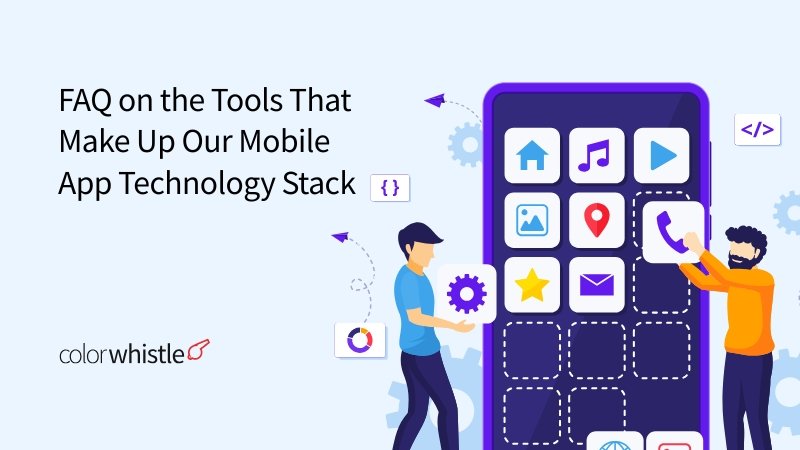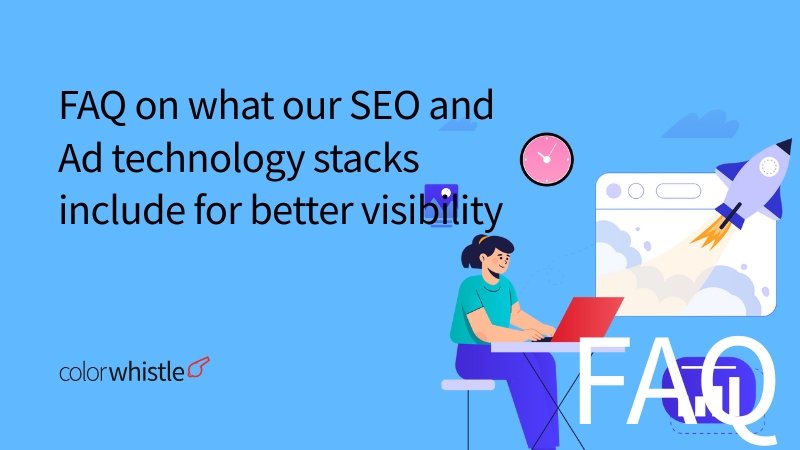The digital landscape has evolved beyond flat, static interfaces. Today’s audiences expect immersive web experiences that captivate, engage, and deliver memorable interactions. At ColorWhistle, we specialize in transforming ordinary digital touchpoints into extraordinary journeys through our advanced 3D digital experiences technology stack.
Our approach combines cutting-edge tools, innovative methodologies, and creative expertise to build interactive solutions that don’t just attract attention, they hold it. From product configurators that let customers explore every angle to virtual reality environments that transport users into new worlds, our 3D stack bridges the gap between imagination and reality.
The question many business leaders and tech decision-makers ask isn’t whether 3D technology matters, it’s how to implement it effectively. What technologies power these experiences? How do they integrate with existing platforms? Can they truly drive measurable improvements in user engagement and conversion rates?
This comprehensive FAQ with Tech Stack guide addresses these questions and more. We’ll walk you through the components of our 3D technology ecosystem, explain how we create seamless immersive experiences across devices, and demonstrate why investing in 3D capabilities represents a strategic advantage for forward-thinking businesses ready to stand out in an increasingly competitive digital marketplace.
Moreover, as businesses leverage our advanced technology stack for their digital transformation, it’s crucial to remember the importance of SEO for IT services companies. This should be viewed as a long-term marketing investment option for compounding growth returns.
For SaaS companies looking to maximize their growth potential, understanding Total Addressable Market (TAM) is essential. This knowledge can significantly aid in scaling operations, impressing investors, and achieving overall success.
In this era of digital dominance, having a robust online presence is non-negotiable. If you’re facing challenges with your website’s performance or design, our article on common WordPress problems solved could provide valuable insights.
Lastly, if you’re seeking professional assistance to elevate your online presence through stunning website design, look no further than the top website design agencies in Indiana. These agencies offer creative web solutions tailored to meet diverse business needs.
1. What Technologies Power ColorWhistle’s 3D Stack?
ColorWhistle’s 3D technology stack is a carefully chosen combination of advanced tools and frameworks created to provide outstanding immersive web experiences. Our method for creating 3D digital experiences relies on three specific technologies, each serving a unique role in the production process.
Web-Based 3D Rendering Technologies
At the core of our interactive digital solutions is WebGL, the browser-based graphics API that enables hardware-accelerated 3D rendering without requiring plugins or downloads. Building upon this foundation, we use powerful JavaScript libraries that simplify complex 3D operations:
- Three.js serves as our primary framework for creating sophisticated 3D web design technologies. This library abstracts the complexities of WebGL while providing extensive functionality for lighting, materials, geometries, and animations. Its robust ecosystem and active community support make it ideal for projects requiring rapid development cycles and cross-browser compatibility.
- Babylon.js complements our toolkit when projects demand advanced physics simulations, particle systems, or complex shader implementations. This framework excels in creating AR/VR web experiences directly in the browser, offering native support for WebXR standards and providing developers with intuitive debugging tools.
Game Engine Integration
For applications requiring sophisticated immersive web experiences with complex interactions and state management, we deploy industry-leading game engines:
- Unity powers our cross-platform AR/VR applications, enabling seamless deployment to web, mobile, and standalone VR headsets. Its extensive asset store and visual scripting capabilities accelerate development while maintaining high performance standards.
- Unreal Engine handles projects demanding photorealistic rendering and advanced real-time graphics. When clients require architectural visualizations or product demonstrations with cinema-quality visuals, Unreal’s rendering capabilities deliver unmatched fidelity.
3D Asset Creation Pipeline
The visual quality of our ColorWhistle 3D development projects comes from professional-grade modeling software:
Blender provides our artists with a comprehensive, open-source solution for modeling, texturing, rigging, and animation. Its Cycles and Eevee rendering engines allow for accurate material previews before web deployment.
Cinema 4D handles motion graphics and procedural modeling tasks, particularly for projects requiring abstract visualizations or animated product showcases.
Autodesk Maya remains our choice for character animation and complex rigging scenarios, offering unparalleled control over deformation systems and animation workflows.
This multi-layered 3D technology stack, combined with our expertise in React JS development, ensures we select the optimal tools for each project’s unique requirements, balancing visual quality, performance, and development efficiency. Additionally, we understand that sometimes businesses grapple with deciding between remote staffing and outsourcing for their project needs. Our team is equipped to provide insights into these options to help make informed decisions. Furthermore, we are aware of the prevalent myths about website design and development that can often mislead businesses during their digital transformation journey. We strive to debunk these myths through comprehensive guidance and support.
2. How Do You Create Immersive Experiences for Websites and Apps?
Creating immersive web experiences requires a strategic blend of technical implementation and creative design thinking. Our approach centers on making 3D content feel natural and intuitive within the digital environment, whether users access it through a desktop browser, mobile device, or specialized hardware.
Direct Integration of 3D Models and Animations
The foundation of our immersive experiences lies in seamlessly embedding 3D models and animations directly into web pages and mobile applications. This integration transforms static content into dynamic, interactive elements that users can manipulate in real-time.
When a user visits an e-commerce site featuring our technology, they can rotate a product 360 degrees, zoom into intricate details, or watch components animate to demonstrate functionality. The 3D model responds instantly to touch gestures on mobile devices or mouse movements on desktop, creating a tactile sense of interaction that traditional images cannot replicate.
Our team optimizes these models to maintain visual fidelity while ensuring smooth performance across devices. A jewelry retailer, for instance, can showcase a diamond ring with realistic light refraction and metal textures that adjust based on user interaction, allowing customers to examine the piece from every conceivable angle without visiting a physical store.
AR/VR Interactive Demonstrations
AR/VR web experiences take immersion to another level by placing products and services directly into the user’s environment or transporting them into entirely virtual spaces. Through augmented reality features accessible via smartphone cameras, customers can visualize how furniture fits in their living room, preview how a new paint color transforms their walls, or see how eyewear complements their facial features.
Virtual reality demonstrations create controlled environments where users can:
- Experience architectural walkthroughs before construction begins
- Test drive vehicles in simulated conditions
- Participate in virtual showrooms with guided product tours
- Engage with training simulations that replicate real-world scenarios
These interactive demos eliminate uncertainty in the purchasing process. A customer considering a large appliance can use AR to confirm it fits their kitchen space and matches their aesthetic preferences. This real-time visualization capability reduces return rates and increases buyer confidence, directly impacting conversion metrics.
The technical implementation leverages WebXR standards, allowing users to access these experiences directly through their browsers without downloading specialized applications. This accessibility removes friction from the user journey while delivering the sophisticated interactions typically reserved for native applications.
In addition to these immersive experiences, it’s crucial for businesses to ensure their websites are mobile-friendly, especially in sectors like travel where users frequently browse on-the-go. By implementing best practices for mobile website design in 2025, businesses can significantly enhance user experience and boost engagement.
For businesses looking to expand their reach through apps, understanding the nuances of Android and iOS app development is essential. With a collection of top apps from various niches serving as inspiration, companies can effectively build mobile apps tailored to their specific needs.
Moreover, the rise of Flutter apps has revolutionized mobile app development. Known for their popularity among users due to their performance and versatility, Flutter apps offer customized solutions that meet diverse business requirements.
3. How Does the 3D Stack Improve User Engagement and Conversion?
The connection between immersive 3D experiences and measurable business outcomes becomes clear when we look at user behavior patterns. Interactive digital solutions built on our 3D stack turn passive browsing into active participation, fundamentally changing how customers interact with brands online.
Interactive Elements That Drive Exploration
Virtual try-ons are one of the most powerful applications of our technology. When customers can see products in their own environment or on themselves, they feel much more confident making decisions. A furniture retailer using our AR visualization tools found that customers who interacted with 3D models spent an average of 4.2 minutes longer on product pages compared to those viewing static images.
Product configurators take this idea even further by letting users:
- Customize colors, materials, and features in real-time
- Rotate and examine products from every angle
- Compare different variations side-by-side
- Save configurations for later review
These interactive experiences make customers feel like they own the product before they buy it, which leads to fewer returns and higher average order values. By allowing customers to manipulate and personalize products, we directly address the main concern of online shopping: uncertainty about what the final product will look like.
Gamification as an Engagement Multiplier
Gamification strategies integrated into 3D environments create memorable moments that go beyond traditional marketing methods. By adding achievement systems, progress tracking, and reward mechanisms, brands turn product discovery into an exciting journey.
For example, an automotive manufacturer used our tech stack to create a virtual showroom. In this showroom, users could unlock different vehicle features by completing interactive challenges and earn badges for exploring various customization options. As a result:
Time spent on the configuration page increased by 67%
Conversion rate from configurator to inquiry form went up by 43%
89% of users returned to finish their customization
The success of this approach comes from the natural feedback loops created by games. Each time users interact with something in the virtual showroom, they get immediate visual feedback that encourages them to keep exploring.
Building Emotional Connections Through Immersion
3D experiences create emotional connections that static content can’t match. When users can walk through a virtual space, move objects with natural gestures, or see products respond to their actions, they form stronger memories associated with the brand. This emotional investment leads directly to customer loyalty, with immersive experience users being 2.3 times more likely to become repeat customers.
For instance, Mizzen+Main, a menswear brand, successfully used an omnichannel retail strategy with Shopify POS to connect their online and offline stores. This significantly improved customer experiences and drove growth.
In another industry example, innovative travel marketing campaigns have been developed worldwide to engage customers through creative storytelling and immersive experiences.
4. Can the 3D Stack Integrate with Existing Platforms?
One of the most pressing concerns for businesses considering advanced 3D technology is whether it can work alongside their current digital infrastructure. ColorWhistle’s 3D stack is designed with platform integration as a core principle, eliminating the need for complete system overhauls or extensive redevelopment.
Seamless CMS Integration
Our APIs for 3D assets enable straightforward embedding of interactive 3D content into widely-used content management systems. WordPress users can incorporate 3D product viewers, configurators, or virtual showrooms through simple plugin installations or shortcode implementations. The integration process requires minimal technical expertise, allowing marketing teams to deploy immersive experiences without waiting for developer availability.
For e-commerce platforms like Shopify, our solution provides native compatibility through custom apps and theme extensions. Merchants can add 3D product visualization directly to their product pages, enabling customers to rotate, zoom, and examine items from every angle. This integration maintains the existing checkout flow and inventory management systems while enhancing the visual presentation layer. To ensure a smooth transition and maximize effectiveness, businesses can refer to our comprehensive Shopify Store Redesign Checklist, which assists in revamping their Shopify store for increased conversions and sales.
API-First Architecture
The foundation of our platform integration capabilities lies in a robust API-first architecture. This approach offers several advantages:
RESTful endpoints for fetching, updating, and managing 3D assets
WebGL-compatible rendering that works across modern browsers
Real-time asset streaming to minimize initial load times
Webhook support for synchronizing 3D content with product catalogs
Custom web applications built on frameworks like React, Vue, or Angular can consume our APIs to create bespoke 3D experiences tailored to specific business requirements. The API documentation includes comprehensive code examples, authentication protocols, and best practices for optimal implementation.
Mobile App Compatibility
Native mobile applications benefit from SDK support for both iOS and Android platforms. Developers can integrate 3D viewers, AR experiences, and interactive product demonstrations using familiar development tools and languages. The SDKs handle complex rendering operations while exposing simple interfaces for controlling 3D scenes, animations, and user interactions.
Headless Commerce Solutions
For businesses operating headless commerce architectures, our 3D stack functions as a microservice that can be called from any frontend application. This flexibility supports omnichannel strategies where consistent 3D experiences appear across web, mobile, kiosks, and emerging platforms. The decoupled nature ensures that upgrading or changing one component doesn’t disrupt the entire ecosystem.
Moreover, businesses leveraging video marketing strategies can significantly enhance their brand communication by incorporating user-generated content into their video marketing efforts. This approach not only fosters influential brand communication but also engages customers on a deeper level.
5. How Do You Ensure Performance and Accessibility?
The visual richness of 3D experiences comes with inherent technical challenges. Heavy asset files, complex geometries, and real-time rendering can strain device resources and create barriers for users with slower connections or older hardware. Our approach balances visual fidelity with technical efficiency through strategic optimization and inclusive design principles.
Performance Optimization Strategies
Optimized 3D models form the foundation of our performance-first methodology. Our technical team employs polygon reduction techniques to minimize mesh complexity without sacrificing visual quality. Each model undergoes rigorous analysis to identify and eliminate redundant vertices, optimize texture resolutions based on viewing distance, and implement level-of-detail (LOD) systems that automatically adjust model complexity based on the user’s proximity to objects.
Texture compression plays a critical role in reducing file sizes. We utilize modern formats like KTX2 and Basis Universal that offer superior compression ratios while maintaining visual integrity across different devices. Normal maps and displacement maps replace high-polygon geometry where appropriate, creating the illusion of detail without the computational overhead.
Lazy loading strategies ensure users aren’t overwhelmed with data requests at initial page load. This technique prioritizes critical assets, those immediately visible in the viewport, while deferring non-essential 3D elements until they’re needed. As users scroll or navigate through the experience, additional assets load progressively in the background.
Our implementation includes:
- Viewport-based loading: 3D models load only when they enter the user’s field of view
- Progressive mesh streaming: Lower-resolution versions appear first, followed by higher-quality assets
- Adaptive quality settings: Automatic adjustment based on device capabilities and network conditions
- Asset bundling: Grouping related resources to minimize HTTP requests
Accessibility Considerations
Performance optimization extends beyond speed metrics. We implement keyboard navigation support for users who cannot interact with 3D environments through traditional pointing devices. ARIA labels provide context for screen readers, describing 3D elements and their interactive functions.
Fallback content ensures users on devices without WebGL support or those who disable JavaScript still receive meaningful information. Alternative text descriptions, static images, and traditional HTML content serve as accessible alternatives to immersive 3D experiences.
Compression techniques reduce bandwidth requirements, benefiting users with limited data plans or slower connections. Our adaptive rendering system detects connection speeds and device capabilities, automatically scaling visual complexity to maintain smooth frame rates across the performance spectrum.
In addition to these strategies, we are also exploring AI-driven marketing automation for educational institutions which could revolutionize how we engage with students online by improving their overall experience through personalized interactions and smarter assistance, similar to how Google AI is enhancing user experience on Android devices.
6. What Industries Benefit Most from These Immersive Digital Experiences?
The versatility of ColorWhistle’s 3D stack enables transformative applications across diverse sectors, each leveraging immersive technology to solve unique challenges and create compelling user experiences. Understanding which industries are using immersive tech can help businesses identify opportunities for digital transformation.
E-Commerce and Retail
Online retailers use 3D visualization to bridge the gap between physical and digital shopping. Virtual try-on solutions allow customers to see how clothing, accessories, or makeup products appear on them before purchase. Product configurators enable shoppers to customize furniture, vehicles, or electronics in real-time, rotating items 360 degrees and examining details from every angle. This interactive approach reduces return rates while increasing customer confidence in purchasing decisions.
Real Estate and Architecture
Property developers and real estate agencies use interactive property tours to showcase listings without requiring physical visits. Potential buyers navigate through homes, explore different room layouts, and visualize renovation possibilities through immersive 3D walkthroughs. Architects present design concepts to clients using photorealistic renderings that allow stakeholders to experience spaces before construction begins, facilitating better decision-making and reducing costly revisions.
Education and Training
Educational institutions use immersive learning tools that transform abstract concepts into tangible experiences. Medical students practice surgical procedures through realistic simulations, while engineering students interact with complex machinery in virtual environments. These applications provide safe, repeatable training scenarios that enhance knowledge retention and skill development without the risks or costs associated with physical training. The Metaverse is also playing a transformative role in K-12 education, enhancing learning through immersive virtual environments and innovative teaching methods.
Healthcare and Medical Visualization
Healthcare providers use 3D technology for patient education, surgical planning, and medical device demonstrations. Surgeons examine detailed anatomical models derived from patient scans, planning complex procedures with enhanced precision. Pharmaceutical companies create interactive molecular visualizations to explain drug mechanisms to healthcare professionals, making complex scientific information more accessible and understandable.
Entertainment and Brand Experiences
Entertainment brands create memorable interactive experiences that deepen audience engagement. Museums develop virtual exhibitions that bring historical artifacts to life, while automotive manufacturers build immersive showrooms where customers explore vehicle features through gamified experiences. These applications transform passive viewing into active participation, creating emotional connections that drive brand loyalty.
In addition to these sectors, the digital landscape is evolving rapidly with the need for effective online presence management. For businesses seeking to enhance their visibility in this space, exploring options like the best digital marketing agencies in Canada can be beneficial.
The FAQ with Tech Stack approach demonstrates how ColorWhistle’s comprehensive solution adapts to each industry’s specific requirements, delivering measurable improvements in user engagement, operational efficiency, and business outcomes. In particular, sectors like education could greatly benefit from specialized education digital marketing services, which are at the forefront of revolutionizing digital strategies for transformative growth.
Moreover, as businesses scale up their operations, integrating advanced systems such as GoHighLevel’s AI-driven CRM automation can significantly boost efficiency by transforming customer management processes with smart workflows.
The Hardware Component of Our Immersive Tech Stack
While software forms the foundation of immersive digital experiences, VR headsets and AR devices serve as the critical bridge between digital content and human perception. These hardware components transform abstract code into tangible, interactive environments that users can navigate, manipulate, and experience with unprecedented depth.
VR Headsets for Complete Immersion
Modern VR headsets deliver fully enclosed visual experiences that transport users into entirely digital environments. Our 3D stack supports deployment across multiple headset platforms:
Meta Quest 2 and Quest Pro – Standalone devices offering wireless freedom and inside-out tracking, ideal for consumer-facing applications
HTC Vive Pro – High-resolution displays with precise external tracking for professional and enterprise solutions
PlayStation VR2 – Console-integrated experiences for entertainment and gaming applications
Valve Index – Premium hardware featuring high refresh rates and advanced controllers for detailed interactions
These devices enable users to experience product demonstrations, virtual showrooms, and training simulations with complete spatial awareness and natural movement.
AR Devices for Blended Reality
AR devices overlay digital content onto the physical world, creating hybrid experiences that enhance rather than replace reality. Our technology stack accommodates various AR hardware:
- Microsoft HoloLens 2 – Enterprise-grade mixed reality headset with advanced hand tracking and spatial mapping
- Magic Leap 2 – Lightweight AR glasses designed for extended wear in professional environments
- Mobile AR via smartphones and tablets – Accessible AR experiences through devices users already own
The choice between VR and AR hardware depends on specific use case requirements. VR excels when complete environmental control enhances the experience, while AR proves valuable when maintaining connection to physical surroundings remains essential. Our development approach ensures applications remain hardware-agnostic where possible, allowing businesses to deploy across multiple device types without rebuilding core functionality.
Software Tools Behind the Scenes
Creating immersive digital experiences requires a complex combination of modeling software and rendering engines working together throughout our development process. Each tool has a specific role, allowing our team to turn initial designs into interactive, high-quality 3D environments.
3D Modeling and Asset Creation
Our artists use industry-leading modeling software to create detailed digital assets:
- Blender is an open-source solution for polygonal modeling, sculpting, and texture painting. It allows our team to create everything from architectural elements to character models.
- Cinema 4D is great for motion graphics and procedural modeling workflows. It’s especially useful for creating animated product demonstrations and brand experiences.
- Autodesk Maya is our main tool for complex character rigging and animation sequences. It offers powerful tools for organic modeling and deformation.
Real-Time Rendering Technology
The visual quality of our immersive experiences relies heavily on advanced rendering engines that turn 3D data into stunning visuals:
Unity’s Universal Render Pipeline (URP) delivers optimized performance across devices while maintaining visual quality. This makes it perfect for web-based and mobile AR applications. The engine’s shader graph system allows our developers to create custom materials that respond dynamically to user interactions and environmental conditions.
Unreal Engine’s Nanite and Lumen technologies take real-time rendering to the next level. They let us display film-quality assets with millions of polygons while keeping smooth frame rates. These systems automatically handle global illumination and reflections, creating lifelike environments that react naturally to changes in lighting.
Simulation and Physics
Specialized simulation software adds realism to our digital experiences. Houdini’s procedural generation capabilities let us create complex particle systems and dynamic effects. Meanwhile, physics engines integrated within Unity and Unreal ensure objects behave authentically when users interact with them through touch, gesture, or controller input.
Moreover, API development is crucial in enhancing these immersive experiences. By creating high-quality APIs, we can smoothly integrate different software tools and platforms, ensuring seamless data flow and functionality across our development process. This enables us to build more robust applications that offer improved user interaction and experience.
Emerging Trends Shaping the Future of Immersive Experiences
The world of immersive digital experiences is constantly changing and growing, thanks to new technologies that make 3D content easier to create and use. WebXR technologies are leading this change, revolutionizing how people experience augmented and virtual reality.
WebXR: The Browser-Based Revolution
WebXR is a new standard that allows AR and VR experiences to be accessed directly through web browsers. This means users no longer have to download apps or install specific platforms to enjoy immersive content. Instead, they can simply click on a link to enter a complex 3D environment, just like watching an online video.
This browser-based approach offers several compelling advantages:
Instant accessibility across devices without requiring specialized software installations
Cross-platform compatibility that works seamlessly on desktop, mobile, and headset devices
Reduced friction in the user journey, leading to higher engagement rates
Lower development costs through unified codebases that deploy across multiple platforms
Progressive Web Apps Meet 3D
The combination of Progressive Web App (PWA) technology with WebXR creates hybrid experiences that offer the benefits of both native apps and web accessibility. These applications can function offline, send push notifications, and provide full-screen immersive experiences while still being lightweight like web-based solutions.
AI-Powered 3D Content Generation
Artificial intelligence is transforming the way we create and improve 3D assets. Machine learning algorithms now help generate realistic textures, automate rigging processes, and even produce entire 3D models from text descriptions or 2D images. This makes it easier for anyone to create high-quality 3D content quickly. The potential for building scalable AI-powered MVPs for seamless integration and growth is an exciting prospect in this space.
Real-Time Ray Tracing in Browsers
Advanced rendering techniques such as real-time ray tracing are becoming possible in web environments. This allows for lifelike lighting and reflections that were once only achievable with expensive gaming hardware. As a result, product visualizations and architectural renderings can now compete with traditional photography in terms of quality and realism. Looking ahead to 2025, it’s evident that top SaaS website designs will include these cutting-edge immersive features, raising the bar for user interaction and experience.
Conclusion
The digital world is constantly changing, and businesses that embrace immersive technologies are leading the way in customer engagement. ColorWhistle’s 3D development combines advanced hardware and complex software components to create experiences that go beyond traditional online interactions.
Our detailed FAQ with Tech Stack shows how strategic use of 3D technologies can turn passive viewers into active participants. By integrating WebGL frameworks, powerful game engines, and industry-standard modeling tools, we lay a strong foundation for creating experiences that captivate audiences and drive tangible business results.
Business owners and tech leaders looking to enhance their online presence can benefit from our proven approach:
- Increase user engagement through interactive product demonstrations
- Reduce purchase hesitation with virtual try-ons and configurators
- Create memorable brand experiences that foster customer loyalty
- Implement scalable solutions that grow alongside business needs
The combination of performance optimization, cross-platform compatibility, and accessibility ensures that immersive experiences reach the widest possible audience without compromising quality or functionality.
Ready to transform your digital strategy?
ColorWhistle’s expertise in creating immersive 3D digital experiences can help your brand stand out in competitive markets. Let’s work together to bring your vision to life with technology that engages, converts, and delights your customers.
Want to elevate your brand with immersive 3D digital experiences? Let’s bring your ideas to life.
Additionally, if you’re in the education sector seeking innovative ways to promote your online courses or educational services, we have a wealth of resources available. Our recent blog post on education ads design ideas offers over 41 online education ads design inspirations, including Google display ads, brochures, and social media design ideas sourced from leading education agencies.
FAQs (Frequently Asked Questions)
What technologies power ColorWhistle’s advanced 3D technology stack?
ColorWhistle’s 3D technology stack is powered by WebGL and JavaScript libraries such as Three.js and Babylon.js for creating interactive 3D web content. Additionally, game engines like Unity and Unreal Engine are utilized for developing immersive AR/VR applications, while industry-standard 3D modeling software including Blender, Cinema 4D, and Autodesk Maya are employed to craft detailed digital assets.
How does ColorWhistle create immersive web and app experiences?
We embed intricate 3D models and animations directly within websites and mobile apps to deliver captivating user experiences. Furthermore, we develop AR/VR interactive demos that enable potential customers to visualize products in real-time, significantly enhancing their engagement and understanding of the offerings.
In what ways does the 3D stack improve user engagement and conversion rates?
Our interactive digital solutions incorporate elements like virtual try-ons and product configurators that encourage users to explore more, resulting in longer session durations. We also integrate gamification strategies within immersive environments to foster memorable brand experiences, which drive increased customer loyalty and higher conversion rates.
Can ColorWhistle’s 3D technology stack integrate with existing platforms?
Yes, we provide APIs that facilitate seamless embedding of rich 3D assets into popular content management systems like WordPress and e-commerce platforms such as Shopify. This integration enables businesses to adopt our immersive solutions without requiring extensive development efforts.
How does ColorWhistle ensure performance optimization and accessibility for 3D experiences?
We employ various optimization techniques such as creating optimized 3D models that load efficiently on both desktop and mobile devices. Additionally, lazy loading strategies are implemented to fetch only necessary assets initially, minimizing friction in user experience and ensuring smooth performance across platforms.
Which industries benefit most from ColorWhistle’s immersive digital experiences?
Key sectors benefiting from our immersive tech include e-commerce with virtual try-ons, real estate through interactive property tours, education via immersive learning tools, healthcare using simulations, among others. These industries leverage our technology to enhance customer experience and operational efficiency effectively.





